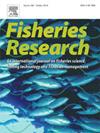How can we increase collaboration in fisheries stock assessment?
IF 2.3
2区 农林科学
Q2 FISHERIES
引用次数: 0
Abstract
Fisheries stock assessment in some form underpins management of many fish stocks, particularly the most valuable. Quantitative stock assessments are highly technical, with a range of approaches available. Which method of stock assessment is used may influence the outcome of a stock assessment, and potentially the sustainability of the resource and harvesting sector. As with other applied research, the benefits of sharing ideas and methods to improve stock assessments is high. Collaboration in stock assessments has a range of benefits, including knowledge transfer and the associated benefits of obtaining different perspectives, such as finding solutions to modelling challenges more easily. This, in turn, can lead to time saving and avoid duplication of effort. In Australia, stock assessments are undertaken by teams of scientists geographically dispersed across the country, generally focused on stocks within their own jurisdiction. We surveyed Australian stock assessment scientists and found that most valued collaboration and engaged in collaboration in a high proportion of stock assessments, but this was mostly limited to within their organisation. We examined barriers to greater collaboration and found that these largely related to limited availability of face-to-face meetings and conferences, the lack of a readily accessible network of stock assessment scientists, and the limited time to engage in these activities. Development of a national community of practice was seen as the most preferable way to redress these issues. These issues are likely being experienced elsewhere, so the solutions found in the study may be more broadly applicable.
我们如何加强渔业种群评估方面的合作?
以某种形式进行的渔业种群评估是许多鱼类种群,特别是最有价值鱼类种群管理的基础。种群数量评估是高度技术性的,有一系列可用的方法。使用哪种种群评估方法可能影响种群评估的结果,并可能影响资源和收获部门的可持续性。与其他应用研究一样,分享改进种群评估的想法和方法的好处是很大的。种群评估方面的合作有一系列好处,包括知识转移和获得不同观点的相关好处,例如更容易找到解决建模挑战的办法。这反过来又可以节省时间并避免重复工作。在澳大利亚,种群评估是由分布在全国各地的科学家小组进行的,一般集中在他们自己管辖范围内的种群。我们调查了澳大利亚的库存评估科学家,发现他们最重视合作,并且在库存评估中参与合作的比例很高,但这主要局限于他们的组织内部。我们研究了扩大合作的障碍,发现这些障碍主要与面对面会议的有限可用性、缺乏易于访问的种群评估科学家网络以及参与这些活动的有限时间有关。发展一个国家实践共同体被认为是解决这些问题的最可取的办法。这些问题可能在其他地方也遇到过,因此研究中发现的解决方案可能更广泛地适用。
本文章由计算机程序翻译,如有差异,请以英文原文为准。
求助全文
约1分钟内获得全文
求助全文
来源期刊

Fisheries Research
农林科学-渔业
CiteScore
4.50
自引率
16.70%
发文量
294
审稿时长
15 weeks
期刊介绍:
This journal provides an international forum for the publication of papers in the areas of fisheries science, fishing technology, fisheries management and relevant socio-economics. The scope covers fisheries in salt, brackish and freshwater systems, and all aspects of associated ecology, environmental aspects of fisheries, and economics. Both theoretical and practical papers are acceptable, including laboratory and field experimental studies relevant to fisheries. Papers on the conservation of exploitable living resources are welcome. Review and Viewpoint articles are also published. As the specified areas inevitably impinge on and interrelate with each other, the approach of the journal is multidisciplinary, and authors are encouraged to emphasise the relevance of their own work to that of other disciplines. The journal is intended for fisheries scientists, biological oceanographers, gear technologists, economists, managers, administrators, policy makers and legislators.
 求助内容:
求助内容: 应助结果提醒方式:
应助结果提醒方式:


